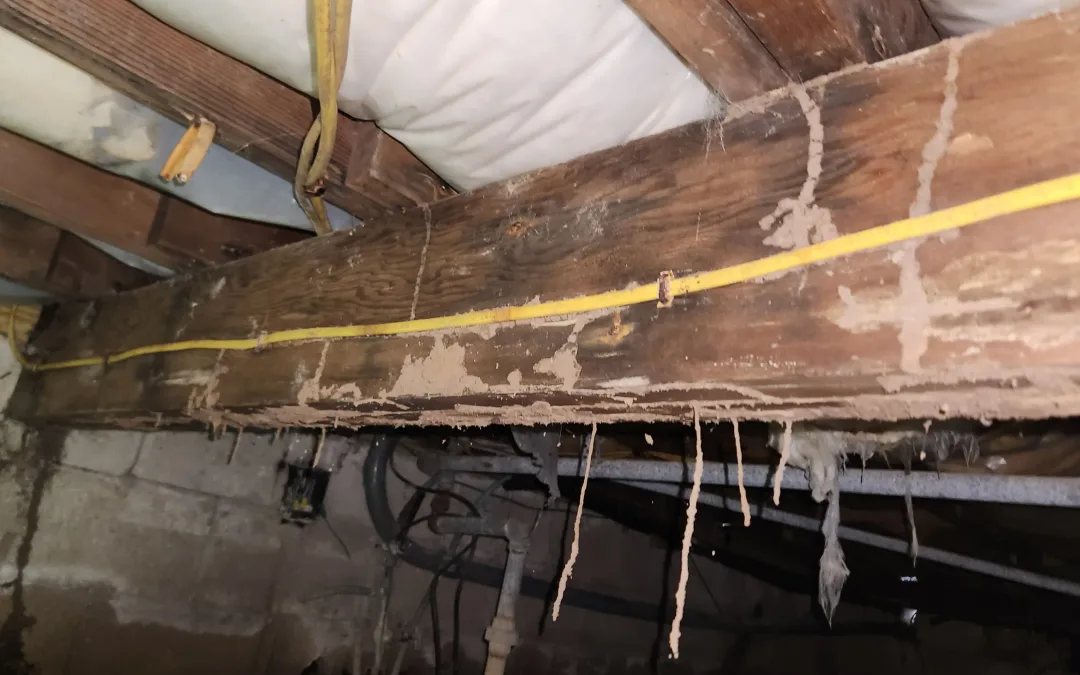Termite Damage at the Jersey Shore: What Homeowners and Buyers Need to Know
Published by McFaulds Inspection Consultants
Along the Jersey Shore, termite damage is one of the most common and costly issues discovered during home inspections. Whether you’re buying a beachside cottage in Point Pleasant or a year-round residence in Toms River, understanding the signs of termite activity and the potential damage these pests can cause is critical. Our inspection team often finds structural damage that can cost thousands to repair — but with the right inspection and maintenance, it’s preventable.
Why Termites Are So Common at the Jersey Shore
The Jersey Shore provides the perfect environment for termite colonies to thrive. Warm, humid summers and sandy soil create ideal conditions for Subterranean Termites, the most destructive species found in New Jersey. These termites live underground and build mud tubes to reach wooden structures above the surface. Homes near dunes, wetlands, and older crawlspace foundations are especially vulnerable.
High humidity and moisture under homes — especially in properties without proper crawlspace encapsulation or vapor barriers — can attract termites looking for soft, damp wood. Once established, colonies can grow rapidly, feeding on beams, floor joists, and sill plates.
Common Signs of Termite Damage Found During Inspections
During home inspections along the Jersey Shore, we often discover warning signs of termite infestations such as:
- Hollow or Soft Wood: Wood that sounds hollow when tapped or feels soft when probed often indicates internal termite tunneling.
- Visible Mud Tubes: Pencil-sized tubes along foundation walls or crawlspace piers — a telltale sign of active termite travel routes.
- Frass or Droppings: Termite droppings may appear as small, sawdust-like pellets near damaged wood or baseboards.
- Swarming Termites: In spring or early summer, you may see winged termites (swarmers) emerging indoors or near windows — a sign of an established colony.
- Paint Bubbling or Buckling: Termites feeding just below painted surfaces can cause blistering or bubbling of paint, often mistaken for water damage.
Examples of Termite Damage We’ve Found
In coastal towns like Brick Township and Lavallette, our inspectors have encountered sill plates and subfloor beams so deteriorated that they could be punctured with a screwdriver. In one home, termites had compromised the integrity of several load-bearing joists beneath the kitchen. In another, we found visible live termites within damaged crawlspace framing — a sign the colony was still active and spreading.
How a Home Inspection Can Identify Termite Damage Early
A professional home inspection is one of the best defenses against hidden termite damage. Inspectors are trained to identify early warning signs in areas you may never look — crawlspaces, basements, rim joists, and behind insulation. At McFaulds Inspection Consultants, we use specialized moisture meters, infrared imaging, and detailed visual inspection to identify not only damage but also the conditions conducive to infestations, such as excessive moisture or wood-to-soil contact.
In some cases, we recommend a separate Wood-Destroying Insect (WDI) inspection for official documentation required by lenders, especially for FHA and VA loans. This inspection includes documentation of any current or past termite activity, as well as recommendations for treatment or repairs.
Steps Homeowners Can Take to Prevent Termite Damage
- Keep gutters and downspouts clear to direct water away from the foundation.
- Ensure proper grading and drainage around the perimeter of the home.
- Install a vapor barrier or encapsulate the crawlspace to reduce humidity.
- Avoid stacking firewood or lumber near the home’s foundation.
- Schedule annual termite inspections, especially for older coastal properties.
What to Do If Termite Damage Is Found
If your home inspection reveals termite activity, don’t panic — but do act quickly. Have a licensed pest control specialist assess the extent of infestation and provide treatment. Structural repairs should be handled by a qualified contractor after treatment to ensure the affected areas are reinforced and the infestation is eliminated.
Conclusion
Termites are a serious concern at the Jersey Shore, but with regular inspections, moisture control, and early detection, you can protect your investment and your home’s structure. If you’re purchasing a property or suspect termite activity, schedule a professional home inspection with McFaulds Inspection Consultants today. Our experience in coastal environments gives us the expertise to find and report on termite issues before they become costly repairs.
It’s always better to identify damage before you close on the home — not after.

